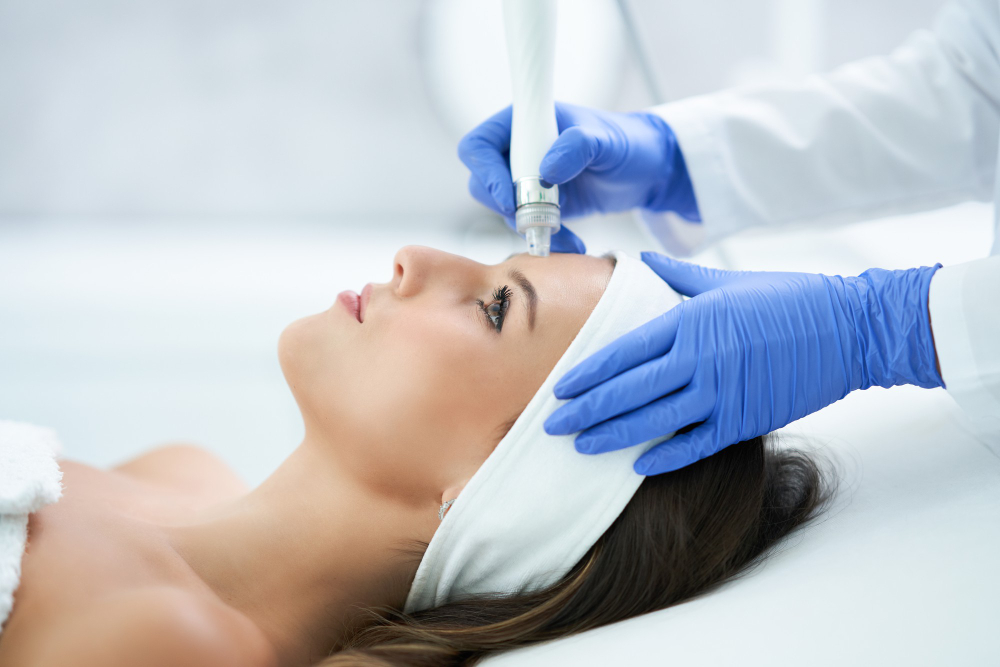Can Surface Cryotherapy Lead to Permanent Hypopigmentation?
Understanding the Effects on Melanin Production
By Rejuvence Clinic
Introduction: The Growing Popularity of Cryotherapy
Cryotherapy, commonly used for the treatment of benign skin lesions, warts, actinic keratosis, and even cosmetic concerns, works by applying extreme cold (typically liquid nitrogen at -196°C) to freeze and destroy targeted tissues. While it is highly effective, one of the most common side effects is hypopigmentation, raising concerns about whether this change in skin colour is temporary or permanent.
What Causes Hypopigmentation After Cryotherapy?
The process of freezing and thawing damages cells, and in the case of skin treatments, it can affect melanocytes, the pigment-producing cells found in the basal layer of the epidermis. When melanocytes are damaged, they either:
- Temporarily stop producing melanin, leading to temporary hypopigmentation, or
- Are completely destroyed, resulting in permanent hypopigmentation.
A study published in the Journal of Clinical Medicine (Rho, 2022) found that cryotherapy-induced melanocyte damage is more severe in darker skin tones (Fitzpatrick IV-VI), with a higher likelihood of long-term pigment loss.
🔬 Research Insight: A case study published in the Nigerian Journal of Dermatology (Anaba, 2020) observed that melanocytes from surrounding skin may migrate to the affected area, potentially leading to partial pigment recovery, though this varies between individuals.
How Does Cryotherapy Suppress Melanin Production?
When the skin undergoes cryotherapy, multiple factors influence the extent of melanocyte damage:
1. Freezing Threshold for Melanocytes
- Unlike keratinocytes, which can withstand mild freezing, melanocytes are more sensitive and can be destroyed at temperatures as mild as -5°C (Damevska et al., 2017).
- Longer freeze-thaw cycles increase the risk of permanent melanocyte destruction.
2. Post-Inflammatory Hypopigmentation
- Freezing induces localised inflammation, triggering an immune response.
- In some cases, inflammatory cytokines suppress melanocyte activity, leading to delayed pigment recovery.
3. Melanocyte Stem Cell Exhaustion
- If the basal layer of the epidermis (where melanocyte stem cells reside) is destroyed, there may be no regeneration of pigment, resulting in permanent hypopigmentation.
Is Hypopigmentation Reversible?
🟢 Temporary Hypopigmentation
- If some melanocytes remain intact, pigment production can resume within months.
- Migration of melanocytes from adjacent healthy skin can aid recovery.
🔴 Permanent Hypopigmentation
- If stem cell reservoirs are completely destroyed, the affected skin remains depigmented permanently.
- Studies in Dermatological Cryosurgery and Cryotherapy (Graham et al., 2016) confirmed that deep freeze treatments reduce the likelihood of repigmentation.
Who is at Higher Risk?
Certain individuals are more prone to experiencing long-term pigment loss:
Risk Factor Why?
Darker skin tones (Fitzpatrick IV-VI) More melanocytes = Greater risk of post-inflammatory hypopigmentation.
Repeated Cryotherapy Sessions Increases cumulative melanocyte damage.
Large Treatment Areas Reduces the chance of melanocytes migrating back.
Sun Exposure Post-Treatment UV exposure can worsen pigment loss.
How to Prevent and Treat Cryotherapy-Induced Hypopigmentation
✅ Prevention Strategies
- Use milder freezing protocols (shorter freeze times, fewer freeze-thaw cycles).
- Pre-treat with topical agents like tacrolimus to protect melanocytes (Journal of the American Academy of Dermatology, 2009).
- Post-treatment sun protection is crucial! Always apply SPF 50+.
🏥 Treatment Options for Persistent Hypopigmentation
- Topical Prostaglandin Analogues
- Bimatoprost (Latisse®) has been studied for stimulating melanocyte activity.
- Excimer Laser Therapy (308nm)
- Has shown promise in re-pigmenting cryotherapy-induced lesions.
- Micropigmentation (Medical Tattooing)
- A long-term solution for permanent pigment loss.
Final Thoughts: Should You Be Concerned?
Cryotherapy remains a safe and effective treatment for various dermatological conditions. However, patients with darker skin tones or those undergoing repeat treatments should be counselled about the risk of permanent hypopigmentation. If pigment loss occurs, early intervention with laser therapy or topical treatments may help restore pigmentation.
📢 Are you considering cryotherapy? At Rejuvence Clinic, we tailor treatments based on skin type and risk factors to ensure optimal results with minimal side effects.
References
- Rho, N.K. (2022). Revisiting the Role of Local Cryotherapy for Acne Treatment: A Review and Update. Journal of Clinical Medicine. MDPI
- Anaba, E. (2020). Pigment Recovery Following Postinflammatory Hypopigmentation Secondary To Cryotherapy Treatment. Nigerian Journal of Dermatology. Link
- Damevska, K., et al. (2017). Cryotherapy-Induced Hypopigmentation in Paediatric Patients. Paediatric Dermatology, Wiley Online Library. DOI
- Graham, G.F. (2016). Dermatological Cryosurgery and Cryotherapy. Springer Publishing. PDF
Would you like to explore alternative treatments that minimise pigmentation risks? Contact Rejuvence Clinic for a personalised consultation!

